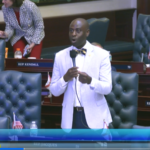Two weeks into a new hurricane season, Florida officials are continuing to express their concerns over possible policyholder assessments by Citizens Property Insurance despite the relative financial strength of the state’s government-run homeowners’ insurer.
Given the insurer’s current financial resources, it could weather up a to a one-in-50 year hurricane, or $15 billion in losses, before it would have to levy any policyholder assessments, Citizens’ Chief Administrative Officer Susanna Murphy said in a report to the Florida Cabinet, which includes Governor Rick Scott and Chief Financial Officer Jeff Atwater.
The $15 billion figure is based on the insurer’s projected year-end surplus of $5.7 billion, $2.9 billion in pre-event bonds, and $6.6 billion in reimbursements from the Florida Hurricane Catastrophe Fund, and $575 million in private reinsurance purchased in May. Once the $15 billion plateau is breached, the insurer would have to issue bonds backed by policyholder assessments to raise money to pay claims.
Citizens’ policyholders would be the first called upon to fund any deficits. Citizens is divided into three accounts: a coastal account that provides wind-only coverage to residents along the state’s coast, a personal lines account made-up of standard homeowners’ policies, and a commercial lines account which consists of large condominium associations.
If a deficit occurred in any of three accounts, the policyholders in that account would face a 15 percent surcharge. In the event of a deficit in all three accounts, Citizens’ policyholders could see an overall surcharge of 45 percent of their premiums.
“This follows the state’s directive that Citizens policyholders should bear more of the burden of the operations of Citizens since they are the beneficiaries of those operations,” Murphy said.
If the Citizens’ surcharges alone are not adequate to pay off the deficit, the insurer could levy a six percent regular assessment on private insurers, the cost of which would be passed through to policyholders. Lastly, the insurer could levy an emergency assessment on both Citizens and non-Citizens of up to 10 percent annually over the life of the debt. Murphy said if the insurer used all the resources at its disposal, it could raise some $24.5 billion.
Left unsaid, however, is that in the event of a storm of that magnitude, in addition to potential Citizens assessments, policyholders would likely face assessments from the state’s Hurricane Catastrophe Fund. The Cat Fund is projected to have $7.25 billion in cash, but would need to raise some $11 billion to reach its statutory claims-paying obligation of $18.5 billion. Under that scenario, all state homeowners would face a 3.54 percent annual assessment for 30 years. And that is assuming that there is enough capacity in the market to support two multi-billion bond offerings, each representing one of the largest public debt offerings in the country.
Gov. Scott noted that while the assessment process seems sound, it depends on the willingness of policyholders to pay assessments that could extend out decades. “After Katarina, a lot of people just left their home and property,” he said.
But Murphy said the insurer has had a 99 percent collection rate for previous assessments including a current one percent emergency assessment that is being used to pay-off bonds issued in 2007. The assessment is expected to continue through 2017.
Department of Agriculture and Consumer Services Commissioner Adam Putnam cautioned that while the numbers may look good when focused on losses from a single hurricane, they don’t take into account the higher probability of multiple storm seasons. “Forget about the Hurricane Andrews and Katarinas, we have a track record in this decade of multiple small and medium sized storms,” he said.
Atwater agreed that multiple storm seasons are the most likely scenario. That’s all the more reason, he said, that policyholders need to be educated about the assessments they could face, especially since they are benefiting from rates that in many cases are lower than the private market. “There may be some kind of comfort in receiving a lower cost right now,” he said. “But its Vegas, everyone hopes we will get by this year.”
As part of a reform bill passed by lawmakers this year, Citizens applications will now contain a disclosure document statement that must be signed by the policyholder, one which spells-out the various surcharges and assessments they could face. Murphy said Citizens is working on a draft of the document.
Growth Continues
Meanwhile, while the insurer continues to earn premiums, it is also continuing to grow. In April alone, the insurer added 40,000 new policyholders to its rolls. However, contrary to some public perception, most of those policyholders are not being added to the insurers’ coastal account.
Looking over a 10-year trend line, the number of coastal policies has remained fairly flat at around 450,000 policies. The growth has come in inland areas, especially in those areas of the state where the private market has stopped providing coverage due to sinkhole losses. Citizens collected some $19 million in sinkhole premiums in 2009, which was dwarfed by the $85 million it paid out in sinkhole claims. Atwater said he was hoping that this year’s property bill, which targeted sinkhole costs, will help reverse those losses.
Murphy made clear, however, that even if the state’s private homeowners’ market could be revived, Citizens would likely remain in business. She said it would still need to provide wind-only coverage in coastal areas. In addition, the insurer provides coverage to some 185,000 mobile homeowners whose residences are more than 25-years old. The insurer also covers low-value homes and older homes that private insurers likely wouldn’t cover under their normal underwriting criteria.
“Absent some kind of initiative to attract that kind of capital to Florida, I know we would not get below at least 500,000 policyholders,” she said.
Was this article valuable?
Here are more articles you may enjoy.



 Increased Writings in Homeowners Adds to US Surplus Lines Growth
Increased Writings in Homeowners Adds to US Surplus Lines Growth  Dog Bite Claims Soar in Frequency and Cost: Report
Dog Bite Claims Soar in Frequency and Cost: Report  Did Florida House ‘Sneak’ Attorney Fee Wording Into Phosphate Mine Bill?
Did Florida House ‘Sneak’ Attorney Fee Wording Into Phosphate Mine Bill?  Father of Tesla Cybertruck Crash Victim Files Lawsuit Over Death
Father of Tesla Cybertruck Crash Victim Files Lawsuit Over Death 

